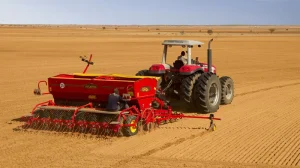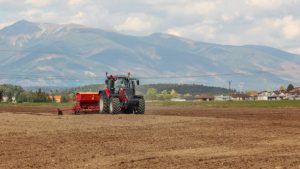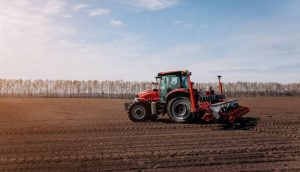farmers have dreamt of a planting method that ensures uniform distribution, precise depth control, and optimal seed spacing. Enter the seed drill, a technological marvel that promises to revolutionize planting efficiency and crop yields. While these sophisticated machines undoubtedly offer significant advantages, the road to precision planting isn’t always smooth. So, before you hop into the driver’s seat of your shiny new seed drill, let’s take a look at some of the common challenges you might encounter along the way.
1. Calibration Conundrum:
Imagine meticulously setting your seed drill to plant corn kernels at a depth of 1.5 inches, only to discover patchy emergence and uneven growth. This frustrating scenario often stems from improper calibration, a crucial step that can make or break your planting success. A 2020 study by the University of Nebraska-Lincoln found that nearly 40% of surveyed farmers reported difficulties with accurate calibration, leading to inconsistent seeding rates and depths. This can not only impact yields but also waste precious seeds and resources.
2. The Learning Curve:
Moving from traditional hand-sowing to the intricate world of seed drills can feel like stepping into a spaceship cockpit. The array of levers, dials, and settings can be daunting, especially for farmers accustomed to simpler methods. A 2019 survey by the National Corn Growers Association revealed that almost 60% of new seed drill adopters struggled with initial setup and operation. This learning curve can delay planting schedules and lead to suboptimal results until operators gain the necessary confidence and expertise.
3. Maintenance Matters:
Just like any complex machine, a seed drill requires regular maintenance and upkeep to perform at its best. Worn-out parts, clogged seed meters, and improper lubrication can all contribute to inaccurate planting and even equipment breakdowns. A 2018 report by the American Society of Agricultural and Biological Engineers highlighted that preventive maintenance was often neglected, leading to costly repairs and downtime during critical planting seasons.
4. The Terrain Test:
Not all fields are created equal. Rolling hills, uneven slopes, and varying soil conditions can pose challenges for even the most sophisticated seed drills. Maintaining consistent seed depth and spacing across diverse terrain can be difficult, potentially impacting germination and plant establishment. A 2021 study by Kansas State University found that seed drills struggled to maintain accuracy on hilly ground, leading to uneven plant distribution and yield losses.
5. The Mother Nature Factor:
Let’s face it, agriculture is a gamble against the elements. Unpredictable weather conditions like heavy rains or strong winds can disrupt planting schedules and throw even the best-calibrated seed drills off kilter. A 2022 report by the United States Department of Agriculture emphasized the significant impact of weather variability on planting success, highlighting the need for flexibility and adaptability when using precision planting technologies.
Despite these challenges, the potential benefits of seed drills remain undeniable. By addressing calibration issues, investing in operator training, prioritizing maintenance, adapting to diverse terrain, and staying prepared for weather fluctuations, farmers can harness the power of precision planting to achieve optimal yields and resource efficiency. Remember, the journey to perfect planting is a continuous learning process, and by embracing the challenges and seeking solutions, you can unlock the true potential of your seed drill and cultivate a bountiful future for your farm.
A Step-by-Step Guide to Calibrating Your Precision Seed Drill
Precision seed drills hold the promise of agricultural utopia: perfectly spaced seeds nestled at optimal depths, ensuring uniform emergence and bumper crops. But this dream hinges on one crucial step: calibration. Get it right, and your fields sing with precise rows of verdant seedlings. Get it wrong, and you’re left staring at patchy stands and potentially compromised yields.
Here’s the good news: mastering calibration isn’t sorcery, it’s science. With a little know-how and a dash of patience, you can transform your seed drill into a champion of crop uniformity. So, grab your tools, and a can-do attitude, and let’s dive into the how-to’s of precision calibration.
1. Know Your Numbers:
Before you touch a lever, gather some key data. You’ll need:
-
Desired seeding rate:
This varies by crop and desired plant density. Consult seed package recommendations or agricultural extension services for guidance.
-
Row spacing:
Measure the distance between seed rows on your drill.
-
Drive wheel circumference:
Consult your drill manual or measure the wheel’s perimeter with a tape measure.
2. Set the Stage:
Choose a level, clean area free from rocks and debris. Mark off a distance equal to 100 times your row spacing. This will be your calibration run.
3. Prime the Pump:
Fill the seed hopper with enough seeds to complete the calibration run. Ensure the seed plates or meters are clean and free of obstructions.
4. Let the Wheels Roll:
Engage the drive wheel and complete the measured calibration run. Collect all seeds planted during this run in a container.
5. Count ‘Em Up:
Carefully count the collected seeds. Divide this number by 100 (the number of row spacings in your calibration run) to determine the seeding rate per row.
6. Dial It In:
Compare your calculated seeding rate to your desired rate. If they differ, adjust the seed meter or plate settings on your drill according to the manufacturer’s instructions. Repeat steps 4-6 until the calculated and desired rates match.
Bonus Tip: Conduct multiple calibration runs for increased accuracy, especially when working with small seeds or new drill settings.
Remember: Calibration is an ongoing process. It’s crucial to recalibrate regularly, especially when changing seed types, adjusting settings, or experiencing significant wear and tear.
By following these steps and embracing regular calibration, you can unlock the true potential of your precision seed drill. Your fields will reward you with uniform stands, optimized yields, and the satisfaction of mastering a valuable agricultural skill. So, go forth, calibrate with confidence, and watch your crops flourish!
A Guide to Seed Drills for Eco-Conscious Farmers
As the world grapples with climate change and resource depletion, sustainable farming practices are more crucial than ever. One key tool in the eco-conscious farmer’s arsenal is the seed drill. These precise planters offer a multitude of benefits, from minimizing soil disturbance to optimizing seed placement, all while boosting yields and conserving resources.
But navigating the world of seed drills can be overwhelming, especially for farmers seeking sustainable solutions. This blog post aims to be your compass, offering reviews of popular seed drill models specifically geared toward eco-friendly farming.
The Eco-Edge of Seed Drills:
Before diving into specific models, let’s explore the sustainability superpowers of seed drills:
-
Reduced Tillage:
Many drills, particularly no-till and strip-till models, minimize soil disturbance, preserving vital soil structure and organic matter. This improves soil health, reduces erosion, and enhances carbon sequestration.
-
Precision Seeding:
Accurate seed placement leads to efficient seed use, minimizing waste and ensuring optimal plant growth. This translates to reduced seed input costs and improved resource utilization.
-
Moisture Conservation:
Precise seed depth placement ensures seeds reach optimal moisture levels, boosting germination rates and reducing water usage.
Sustainable Seed Drill Spotlight:
Now, let’s zoom in on some top contenders in the eco-friendly seed drill arena:
-
Väderstad Rapid A-Series: This versatile drill offers multiple configurations, including no-till and strip-till options. Its innovative metering system ensures precise seed placement even at high speeds, minimizing seed waste. A bonus? Its low draft requirement reduces fuel consumption.
-
John Deere ExactEmerge Planter: This high-tech planter boasts features like individual row shutoff and variable-rate seeding, allowing for precise seed placement and application based on soil conditions. This optimizes resource use and maximizes yields.
-
Kuhn Krause Gladiator Drill: This rugged drill excels in tough conditions, making it ideal for organic farming. Its double-disc openers cut through cover crops and residues with minimal soil disturbance, fostering a healthy soil ecosystem.
Choosing the Right Eco-Drill:
The “best” sustainable seed drill depends on your specific needs and farming practices. Consider factors like:
-
Farm size and type of crops: Larger farms may require high-capacity drills, while smaller operations might opt for more maneuverable models.
-
Soil conditions:
Choose a drill compatible with your soil type and tillage practices.
-
Budget:
Seed drills range in price, so factor in your financial constraints.
Remember, thorough research and consultations with agricultural experts are key to making an informed decision.
Investing in a sustainable seed drill is an investment in the future of your farm and the planet. By embracing precision planting and minimizing environmental impact, you can cultivate not only bountiful harvests but also a thriving ecosystem.
Beyond the Drills:
Remember, sustainable farming is a holistic approach. While seed drills play a crucial role, consider these additional practices to maximize your eco-friendly efforts:
-
Crop rotation:
This diversifies soil nutrients and suppresses pests and diseases, reducing reliance on chemical inputs.
- Cover cropping: Planting cover crops improves soil health, fertility, and moisture retention.
-
Integrated pest management:
Employ natural pest control methods to minimize harmful chemical use.
By adopting these practices alongside an eco-friendly seed drill, you can become a champion of sustainable agriculture, leaving a legacy of healthy soil, bountiful yields, and a thriving planet for generations to come.




